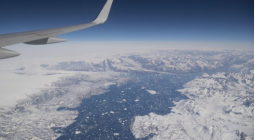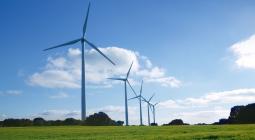Greenland: Mission to the 'core' of climate change

For researchers, tackling the harsh environment is a risk worth taking for rare access to one of the world's most isolated ecosystems
A team of scientists is rushing to document the changes occurring in climate in Greenland, one of the regions on the front lines of climate change.
After the hottest July on record at Summit Camp at the top of the Greenland ce sheet, expedition members sailing up the country's east coast are acutely aware of the urgency.
In addition to the icebergs, which in some areas cover more than half the bay, scientists also need an armed escort to protect them from the polar bears.
But for researchers, dealing with the harsh environment is a risk worth taking for rare access to one of the world's most isolated ecosystems.
The expedition, organized by the French voluntary initiative Greenlandia, aims to understand the effects of climate change on Scoresby Bay.
In a relatively recent survey last January, it was observed that the coldest and highest parts of the ice sheet in Greenland are warming rapidly and showing changes not seen in at least a millennium.
The study combined temperature data revealed by ice cores extracted in 2011 and 2012 with records from older and older cores that reflect temperatures above the ice sheet a millennium ago.
The research also found that, compared to the entire 20th century, this part of Greenland, north and central, is now 1.5 degrees Celsius warmer, and that the rate at which the ice is melting and releasing water (which raises sea level) increases accordingly.
Some scientists estimate that if the air over Greenland warms enough, a feedback loop will be set off: Melting of an ice sheet would bring it down to a lower altitude exposing it to warmer air, which in turn would lead to further melting and fall, and so on.
Source: AFP, Washington Post
Photograph: AP Photo/Mstyslav Chernov






